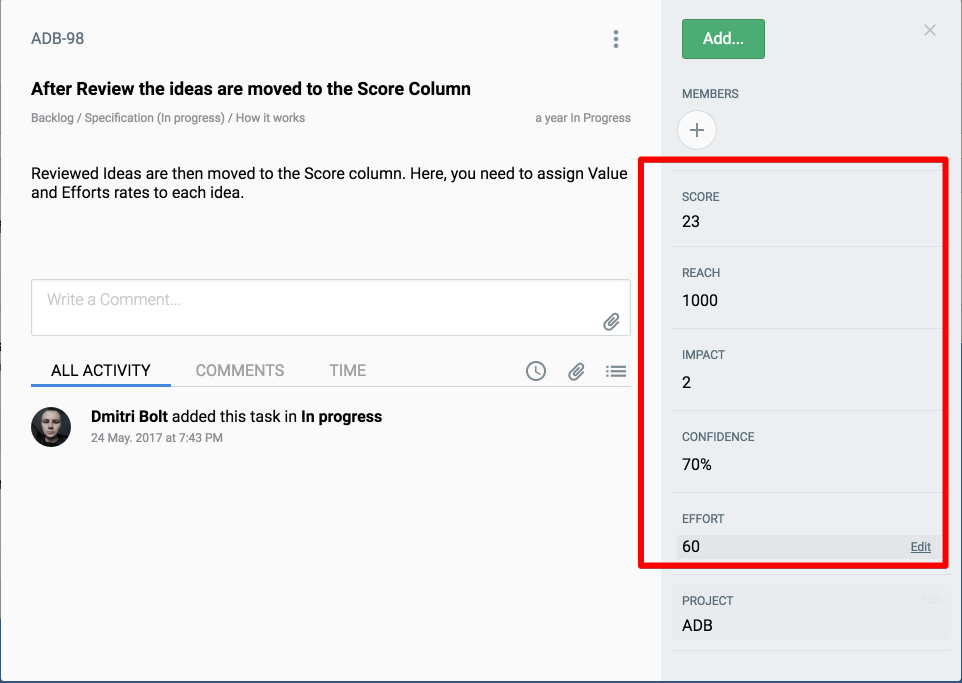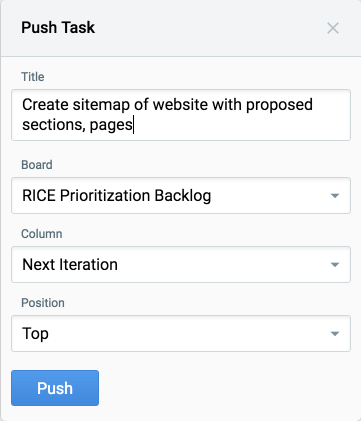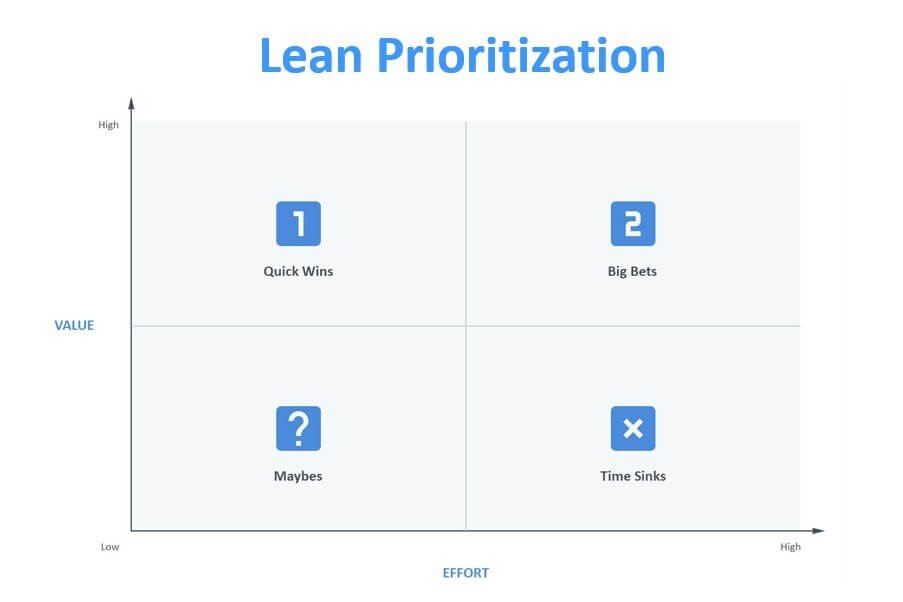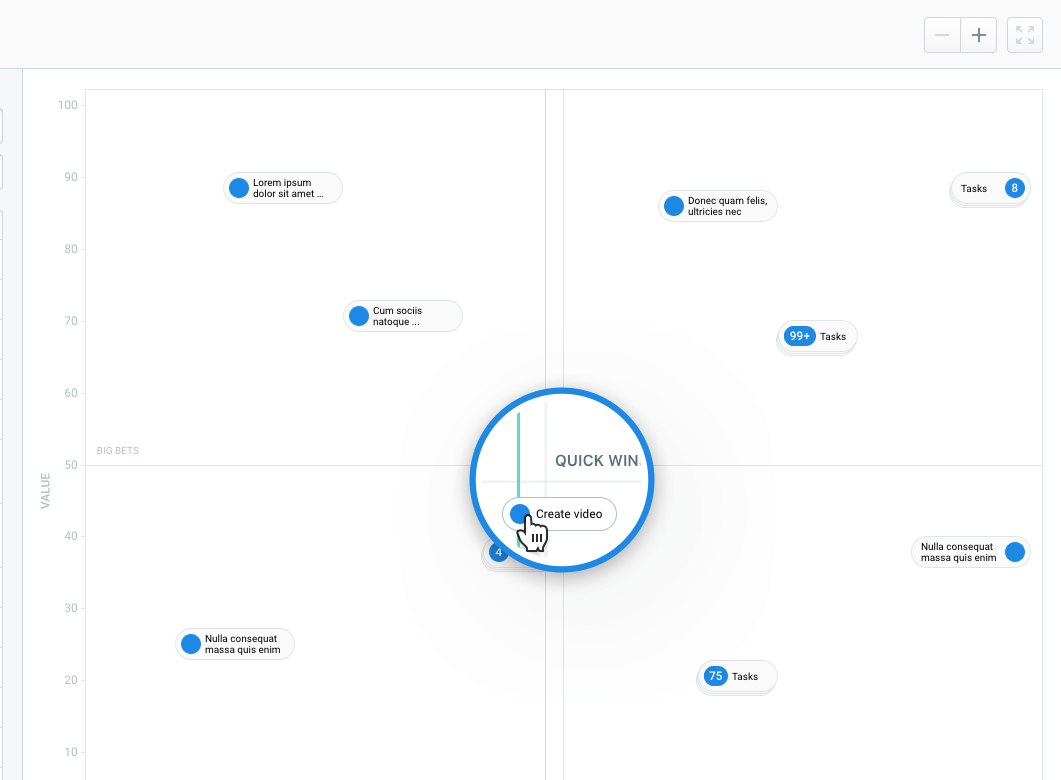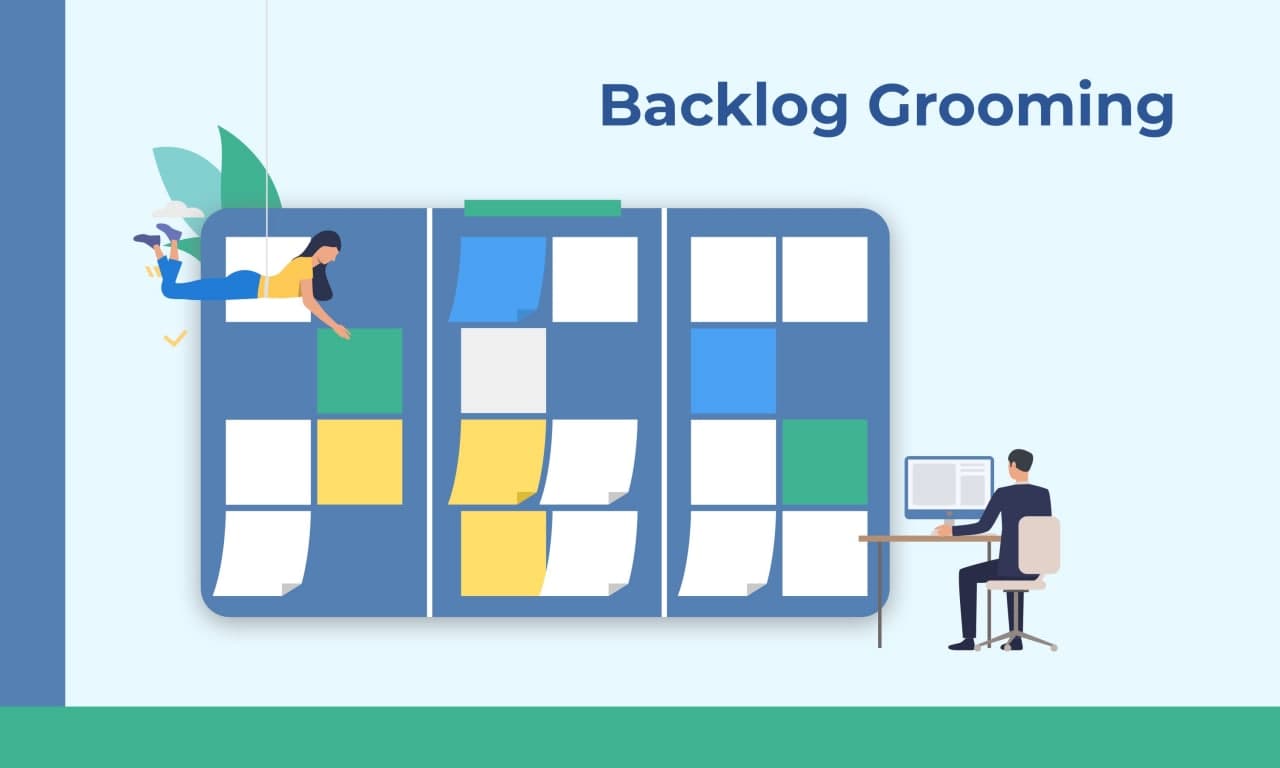RICE Scoring: Quick Prioritization for Product Managers

Any product manager faces the challenge of prioritization while planning product roadmaps. How to decide properly what to work on first?
A solid product roadmap requires a clear order in which you tackle product features and ideas. Product managers and project managers have to prioritize well and this statement is doubtless.
A good prioritization framework will help you consider each factor about a project and combine those factors in a consistent way.
A scoring system in prioritization is certainly not new. However, it may be hard to find a specific framework that will allow you to usefully compare different ideas in a consistent way.
There are dozens of popular prioritization methodologies from gaming to the most complicated, quantitative and qualitative. In this post, we describe how to use an effective RICE model of prioritization and show how Hygger.io helps to apply it.
What is RICE about?
RICE is a method to prioritize ideas and features. The acronym consists of 4 factors that we use to evaluate project ideas:
- Reach
- Impact
- Confidence
- Effort
With a RICE scoring approach, you take your proposed features or initiatives, rank each of them using a Reach, Impact, Confidence and Effort, and then step back and use the scores you’ve come up with to decide which initiatives make the cut.
Reach
Reach is measured in a number of people/events per time period. This factor is aimed to estimate how many people each feature or project will affect within a specific time period and how many customers will see the changes.
Pay attention to real measurements from product metrics instead of using unclear numbers.
As the example:
- This feature will be used by 800 users per month.
- 1000 start the onboarding and with 70% completion rate only 700 users will see this feature (which is shown right after completion).
Impact
Impact reflects what contribution does the feature give to the product.
Value is understood in different ways in each product. For example, for Hygger (B2B SaaS product) for current quarter, features get high Value if they:
- Improve the trial-to-paid conversion (metrics movers)
- Help to attract new users (Aha-moment)
These are features that help us catch new users during onboarding. But do not forget about the fact that most users “fall off” on the second day. For example, in SaaS, the excellent indicator for day 1 retention is 15%. It means that 85% of people simply leave on the second day. Therefore, here you should think about features that many new users will see as close to the time of registration.
- Help to keep current users
Customers have bought a subscription and now ask to do some feature. We do not “rush” blindly do everything in a row. We accumulate statistics for each feature – how many customers asked for it. And then we do the most popular features.
- Add value to the product and separate us from competitors
There are about 500 project management systems on the market. To survive and succeed, we need to do something completely new, desirably to multiply the life of users or to reduce the costs by several times. Here we are looking for features that can give us a competitive advantage, they will create a reason why customers of competitors will come to us. This competitive advantage should be unique, difficult to repeat and, ideally, not reproducible.
Impact is difficult to measure precisely. So, we choose from a multiple-choice scale: 3 for “massive impact”, 2 for “high”, 1 for “medium”, 0.5 for “low”, and finally 0.25 for “minimal”. These numbers get multiplied into the final score to scale it up or down.
Choosing an impact number may seem unscientific. But remember the alternative: a tangled mess of gut feeling.
As the example:
- Project A: For all customers that see it, it will have a huge impact. The impact score is 3.
- Project B: It will have a lesser impact on every customer. So, the impact score is 1.
- Project C: It is somewhere in-between in terms of impact. The score is 2.
Confidence
If you think a project could have a huge impact but don’t have data to back it up, confidence lets you control that.
Confidence can be measured with a percentage scale.
As the example
- Project A: PM has quantitative metrics to reach, user research for impact, and an estimate for efforts. So the project gets a 100% confidence score.
- Project B: PM operates with data to support the reach and efforts, but he/she is unsured about the impact. The project gets a 80% confidence score.
- Project C: Reach and impact data may be lower than estimated. The effort may be higher. The project gets a 50% confidence score.
Effort
Estimate the total amount of time a feature will require from all team members to move quickly and have an impact with the least amount of effort.
Effort is estimated as a number of “person-months”, weeks or hours, depending on needs. It is the work that one team member can do in a specific month. Unlike the other positive factors, more effort is a bad thing, so it divides the total impact.
As the example:
- Project A will take about a week of planning, 2 weeks of design and 3 weeks for engineering, so the effort score is 2 person-months.
- Project B will require several weeks of planning, about a month for design and 2 months for engineering. The score will be 4 person-months.
- Project C requires just a week of planning, no need for design, and 1-2 weeks for engineering. The score will be 1 person-month.

How to prioritize with RICE in Hygger?
There is a good news! You can find a RICE prioritization in Hygger.io.
First, you collect all the ideas and product features on a Kanban-alike board. With Hygger, you can structure them using horizontal Swimlanes and Labels. You can also adjust the process of working with features using Columns. For example, you can create the following workflow:
- Backlog – you collect all ideas and features in this Сolumn
- Next Up – here you move the features you want to work on
- Specification – you gather requirements and write a specification for features
- Development – features are under development and you can track their status here
- Done – features were successfully delivered to your customers.
The platform offers to choose RICE score model among the scoring types.
How to use it?
So at first you should evaluate every feature with Reach, Impact, Confidence, and Efforts and get the score.
You can also view all features in the table.
So you sort features by score, get some winners from the top and send them to Development with Push option.
Other ways to prioritize in Hygger
What are the other options you can choose for prioritization in Hygger?
Value and Effort Prioritization
This is a simple 2×2 matrix with two axes – Сomplexity and Value:
- Value is what contribution does the feature give to the product.
- Complexity is the effort required to implement a feature.
In Hygger, you can view evaluated features on a Priority Chart:
- First, you should develop Quick Wins, features that give a lot of value but which can be very quickly realized.
- Next – Big Bets. These are features that can bring great value, but they are difficult to implement.
- Then – Maybes – tasks and features that do not bring much value, but are easily implemented. They can be fully realized later.
- And, finally, Time Sinks. These features do not need priority and we can skip them.
This type of prioritization is very lightweight, so you can use it on an everyday basis.
Hygger also offers to prioritize according to ICE score model and using Weighted Scoring for feature prioritization with own custom criteria.
If you want to get more about useful classic and innovative prioritization methods, learn Hygger University articles.
Did you try the RICE prioritization method? Was it helpful? Feel free to share your experience!



